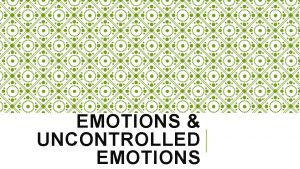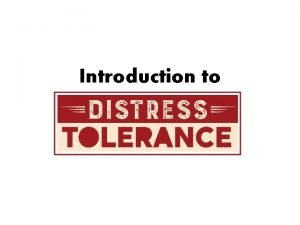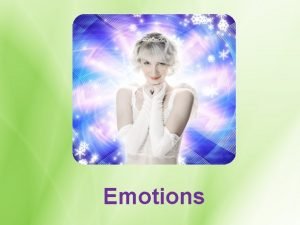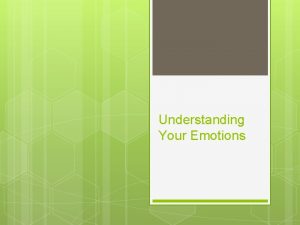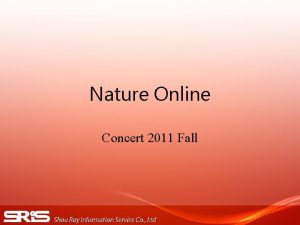13 4 Emotions The Nature of Emotions Emotions










- Slides: 10

13. 4: Emotions

The Nature of Emotions • Emotions: states of feeling • Positive emotions such as happiness and love make life worth living, while negative emotions such as fear and sadness can make life difficult. • Some emotions arise in response to a situation. • Emotions have biological, cognitive, and behavioral components. • Theories try to group emotions into different categories or determine how many emotions there are.

Happiness Anger • James said that the motive behind everything that people do is “how to gain, how to keep, how to recover happiness. ” • People who are happy think the world is a happier, safer place, make decisions more readily, and report greater satisfaction with their lives. • Happier people are more likely to help others. • A common response to an insult or attack, it can make a person seem out of control. • Most people get angry at an alleged offense, especially those that seem deliberate or thoughtless. • Small annoyances such as a loud noise or bad odor can cause anger. • Being assertive instead of hostile can diffuse anger.

Facial Expressions • People can “read” other people’s faces and tell what emotions they are feeling by their expressions. • Cross-cultural evidence suggest that facial expressions are probably inborn. • Certain facial expressions seem to suggest the same emotions in all people. • Smiling appears to be a universal sign of friendliness and approval, while baring the teeth may be a universal sign of anger. Darwin believed that the universal recognition of facial expressions had survival value by communicating motivation.

Theories of Emotion The Opponent-process Theory The Commonsense Approach • Opponent-process theory: emotions often come in pairs, with one emotion being followed by its opposite. • Extreme sadness may follow extreme happiness. • A person quickly interprets a situation, and the interpretation triggers body sensations that signal a feeling, or emotion. The emotion, in turn, triggers a behavior. • Most psychologists agree that thoughts (the appraisal of a situation) come before feelings and behavior. • Three important theories of emotion are the James-Lange theory, the Cannon-Bard theory, and theory of cognitive appraisal.

The James-Lange Theory • People’s emotions follow, rather than cause, behavioral reactions. • Certain situations trigger reactions, called instinctive bodily response patterns. • Suggests people can change their feelings by changing behaviors. The Cannon-Bard Theory • Emotions accompany the bodily responses that are aroused by an external stimulus. • Situations trigger both behaviors and emotions at the same time. Theory of Cognitive Appraisal • All emotions have similar bodily response patterns. • Maintains that the way people label an emotion depends on their cognitive appraisal of the situation.

Evaluation of the Theories • The theories of emotion are quite different from each other. • It is possible that a behavioral reaction pattern could come before, along with, or after an emotional response. • The truth may lie in a combination of theories. • In short, people are complex, thinking beings who evaluate information both from their personal situations and from their bodily responses to those situations.


Current Research in Psychology Evolutionary Psychology • Psychologists have studied what makes us do and feel the way we do. Recent studies look at this question in reference to human evolution. Evolutionary psychology studies how our behaviors might have helped our ancestors survive.

Current Research in Psychology, cont’d • Psychological traits that helped humans survive and procreate got passed down to future generations. • Fear of the dark, taste in food, and affection for children are examples. • Play is so common that it must have some evolutionary advantage. • Play helps the young develop both mentally and physically. • Among social animals, play helps teach rules and establish hierarchies. • Play does not end with childhood. • Emotions may help people make the right decisions.











